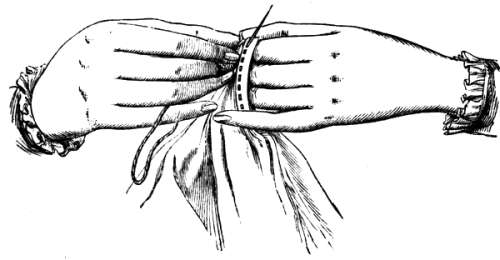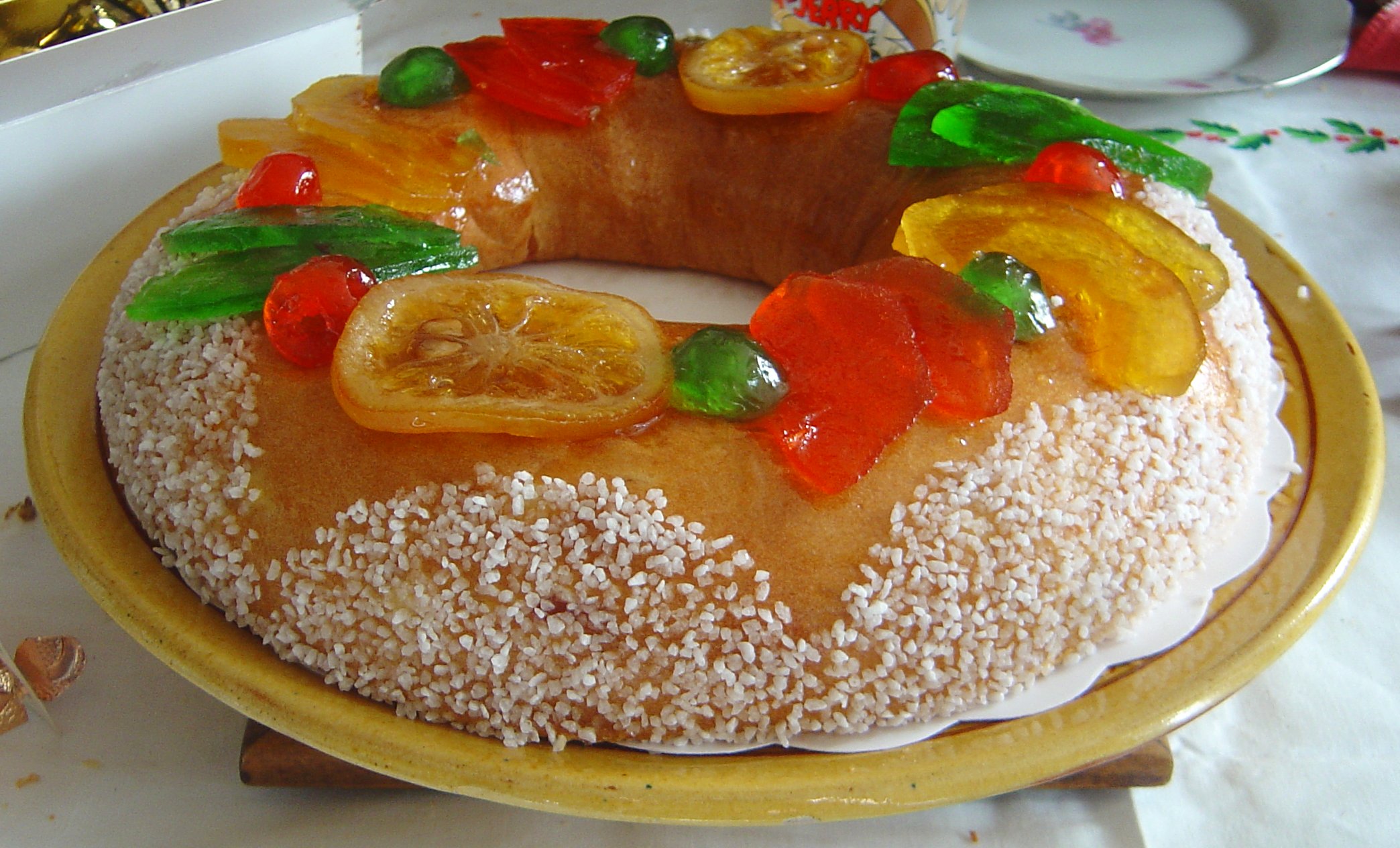|
Brioche Knitting
Brioche knitting is a family of knitting patterns involving tucked stitches, i.e., yarn overs that are knitted together with a slipped stitch from the previous row. Such stitches may also be made by knitting into the row below (equivalent to the slipped stitch) and dropping the stitch above (equivalent to the yarn over). The tucked stitches may form a second layer of knitting in front of the first layer, resembling an array of arches or (seen upside-down) of fish scales. Brioche knitting may have originated in the Middle East. However, the term "brioche" seems to have derived from French slang for "mistake". The name might be a reference to the brioche dinner roll, which is formed of two pieces, one stacked atop the other. Brioche Stitch is included in Barbara G. Walker's ''A Treasury of Knitting Patterns '' and in Elizabeth Zimmermann Elizabeth Zimmermann (9 August 1910 – 30 November 1999) was a British-born hand knitting teacher and designer. She revolutionized the m ... [...More Info...] [...Related Items...] OR: [Wikipedia] [Google] [Baidu] |
Patterns
A pattern is a regularity in the world, in human-made design, or in abstract ideas. As such, the elements of a pattern repeat in a predictable manner. A geometric pattern is a kind of pattern formed of geometric shapes and typically repeated like a wallpaper design. Any of the senses may directly observe patterns. Conversely, abstract patterns in science, mathematics, or language may be observable only by analysis. Direct observation in practice means seeing visual patterns, which are widespread in nature and in art. Visual patterns in nature are often chaotic, rarely exactly repeating, and often involve fractals. Natural patterns include spirals, meanders, waves, foams, tilings, cracks, and those created by symmetries of rotation and reflection. Patterns have an underlying mathematical structure; indeed, mathematics can be seen as the search for regularities, and the output of any function is a mathematical pattern. Similarly in the sciences, theories explain and predict reg ... [...More Info...] [...Related Items...] OR: [Wikipedia] [Google] [Baidu] |
Yarn Over
In knitting, a yarn over is technique in which the yarn is passed over the right-hand knitting needle. In general, the new loop is knitted on the next row, either by itself (producing a hole) or together with an adjacent stitch (e.g., in "tucked" slip stitches). The yarn-over may also be dropped on the next row, producing a longer stretch of yarn between the stitches of the previous row. Conversely, the effect of a yarn-over can be obtained by picking up the yarn between stitches of the previous row; the difference is that the yarn then is shorter, and the flanking stitches of the previous row may be overly drawn together. The term "yarn-over" refers only to the act of wrapping the yarn around the needle, and not to the working of the next existing stitch. Yarn-overs are often used to increase the number of stitches, since knitting a yarn-over creates a new stitch where none existed previously, but does not use up a stitch on the needle. Yarn-overs are also common in eyelet a ... [...More Info...] [...Related Items...] OR: [Wikipedia] [Google] [Baidu] |
Stitch (textile Arts)
In the textile arts, a stitch is a single turn or loop of thread, or yarn. Stitches are the fundamental elements of sewing, knitting, embroidery, crochet, and needle lace-making, whether by hand or machine.Picken (1957), p. 322 A variety of stitches, each with one or more names, are used for specific purposes. Sewing, embroidery, and lace Examples include: * Backstitch * Overcast stitch * Cross stitch * Buttonhole or blanket stitch * Chain stitch * Knot stitch These stitches and their variations are named according to the position of the needle and direction of sewing (''running stitch'', ''backstitch''), the form or shape of the stitch (''chain stitch'', ''feather stitch'') or the purpose of the stitch ( tailor's tack, ''hem stitch'').''Reader's Digest'' (1976), pp. 122–143 Sewing machine stitches are classified by their structure: *Chain stitch, made with one thread *Lockstitch, made with two threads *Overlock, made with one to five threads *Coverstitch, made with t ... [...More Info...] [...Related Items...] OR: [Wikipedia] [Google] [Baidu] |
Middle East
The Middle East ( ar, الشرق الأوسط, ISO 233: ) is a geopolitical region commonly encompassing Arabian Peninsula, Arabia (including the Arabian Peninsula and Bahrain), Anatolia, Asia Minor (Asian part of Turkey except Hatay Province), East Thrace (European part of Turkey), Egypt, Iran, the Levant (including Syria (region), Ash-Shām and Cyprus), Mesopotamia (modern-day Iraq), and the Socotra Governorate, Socotra Archipelago (a part of Yemen). The term came into widespread usage as a replacement of the term Near East (as opposed to the Far East) beginning in the early 20th century. The term "Middle East" has led to some confusion over its changing definitions, and has been viewed by some to be discriminatory or too Eurocentrism, Eurocentric. The region includes the vast majority of the territories included in the closely associated definition of Western Asia (including Iran), but without the South Caucasus, and additionally includes all of Egypt (not just the Sina ... [...More Info...] [...Related Items...] OR: [Wikipedia] [Google] [Baidu] |
Brioche
Brioche (, also , , ) is a bread of French origin whose high egg and butter content gives it a rich and tender crumb. Chef Joël Robuchon described it as "light and slightly puffy, more or less fine, according to the proportion of butter and eggs." It has a dark, golden, and flaky crust, frequently accentuated by an egg wash applied after proofing. Brioche is considered a ''Viennoiserie'' because it is made in the same basic way as bread but has the richer aspect of a pastry because of the extra addition of eggs, butter, liquid (milk, water, cream, and, sometimes, brandy) and occasionally sugar. Brioche, along with ''pain au lait'' and ''pain aux raisins''—which are commonly eaten at breakfast or as a snack—form a leavened subgroup of ''Viennoiserie''. Brioche is often cooked with fruit or chocolate chips and served on its own or as the basis of a dessert with many local variations in added ingredients, fillings, or toppings. Forms Brioche has numerous uses in cuisine ... [...More Info...] [...Related Items...] OR: [Wikipedia] [Google] [Baidu] |
Barbara G
Barbara may refer to: People * Barbara (given name) * Barbara (painter) (1915–2002), pseudonym of Olga Biglieri, Italian futurist painter * Barbara (singer) (1930–1997), French singer * Barbara Popović (born 2000), also known mononymously as Barbara, Macedonian singer * Bárbara (footballer) (born 1988), Brazilian footballer Film and television * ''Barbara'' (1961 film), a West German film * ''Bárbara'' (film), a 1980 Argentine film * ''Barbara'' (1997 film), a Danish film directed by Nils Malmros, based on Jacobsen's novel * ''Barbara'' (2012 film), a German film * ''Barbara'' (2017 film), a French film * ''Barbara'' (TV series), a British sitcom Places * Barbara (Paris Métro), a metro station in Montrouge and Bagneux, France * Barbaria (region), or al-Barbara, an ancient region in Northeast Africa * Barbara, Arkansas, U.S. * Barbara, Gaza, a former Palestinian village near Gaza * Barbara, Marche, a town in Italy * Berbara, or al-Barbara, Lebanon * Berbara, Akkar D ... [...More Info...] [...Related Items...] OR: [Wikipedia] [Google] [Baidu] |
Elizabeth Zimmermann
Elizabeth Zimmermann (9 August 1910 – 30 November 1999) was a British-born hand knitting teacher and designer. She revolutionized the modern practice of knitting through her books and instructional series on American public television. Though knitting back and forth on rigid straight needles was the norm, she advocated knitting in the round using flexible circular needles to produce seamless garments and to make it easier to knit intricate patterns. She also advocated the Continental knitting method, claiming that it is the most efficient and quickest way to knit. During World War II, German or continental knitting fell out of favor in the UK and US due to its association with Germany. Many English-language books on knitting are in the English or American style. Elizabeth Zimmermann helped to re-introduce continental style knitting to the United States. Early life Born Elizabeth Lloyd-Jones in London, England, Zimmermann was the daughter of a British naval officer; h ... [...More Info...] [...Related Items...] OR: [Wikipedia] [Google] [Baidu] |
Knitting
Knitting is a method by which yarn is manipulated to create a textile, or fabric. It is used to create many types of garments. Knitting may be done by hand or by machine. Knitting creates stitches: loops of yarn in a row, either flat or in ''the round'' (tubular). There are usually many ''active stitches'' on the knitting needle at one time. Knitted fabric consists of a number of consecutive rows of connected loops that intermesh with the next and previous rows. As each row is formed, each newly created loop is pulled through one or more loops from the prior row and placed on the ''gaining needle so'' that the loops from the prior row can be pulled off the other needle without unraveling. Differences in yarn (varying in fibre type, ''weight'', uniformity and ''twist''), needle size, and stitch type allow for a variety of knitted fabrics with different properties, including color, texture, thickness, heat retention, water resistance, and integrity. A small sample of kn ... [...More Info...] [...Related Items...] OR: [Wikipedia] [Google] [Baidu] |




